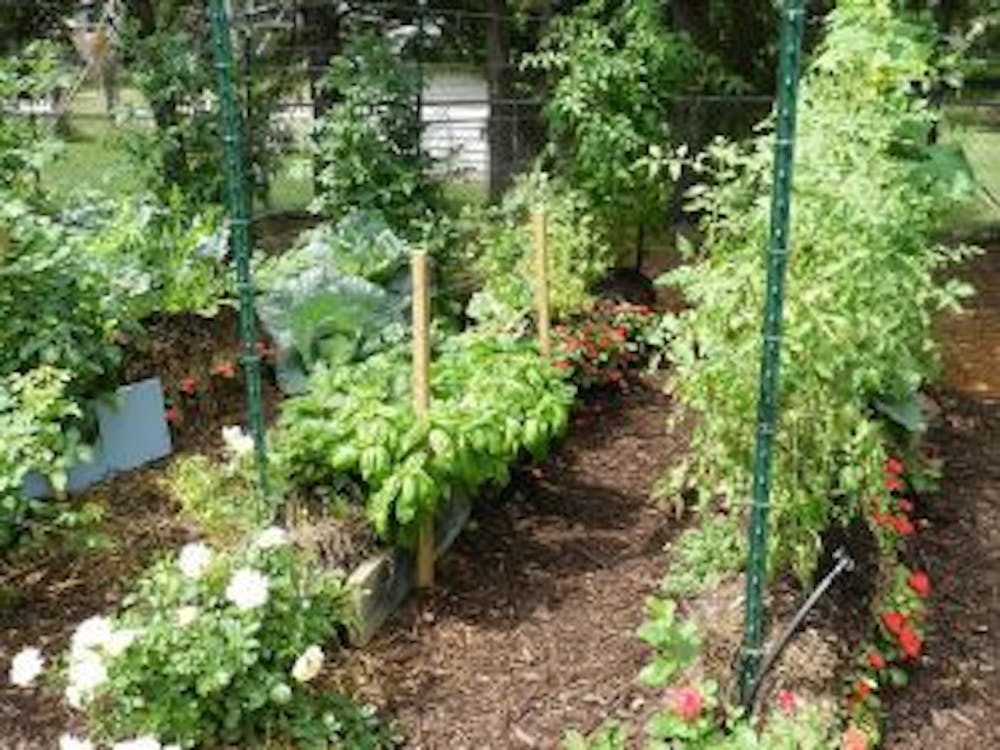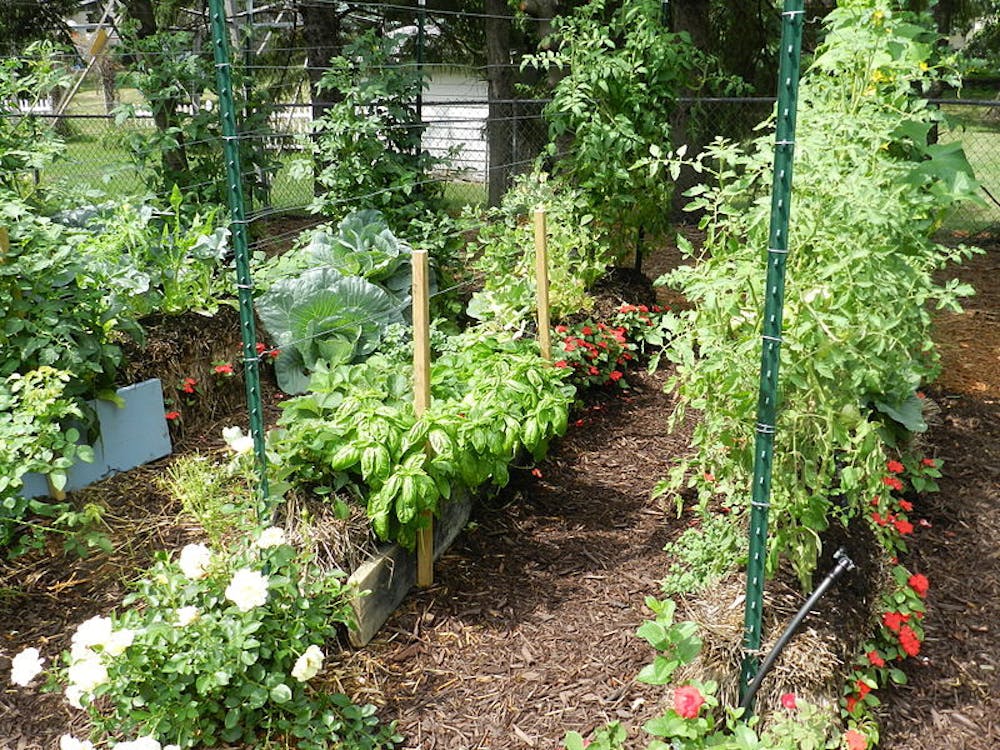For those interested in alternative ways of gardening, the hay bale method may be very enticing. This way of growing your vegetables and berries lets you skip covering your soil in compost and worrying about soil composition, removes a lot of dirt from the equation, and lets you garden without a garden bed.
The hay bale method works like this: you get a bale of hay (possibly from Oxford’s Whistle Stop on Elm street if you’re a Miami University student), cover it in compost tea and other nitrogen, phosphorous, and potassium rich substances like bone meal and blood meal, and after two or three weeks, you directly sow seedlings and seeds into the bale of hay.
It sounds odd, but it works wonderfully. The hay breaks down to provide a damp, nutrient-rich medium, and it is so much cleaner and more porous than the local soil.
Craig Harkrider of Stoney Hedgerow Farm discussed the hay bale method in depth at his workshop on Organic Gardening on February 28. As a vendor at the Farmer’s Market in Uptown Oxford, as well as an agronomist and educator, he knows what he is talking about! Harkrider will be holding another workshop on the soil food web, also very valuable information for gardeners, on the morning of March 14.
After a year or two of use, the hay bales need to be replaced. The old hay can be shredded up and added to compost or used as mulch.
Whatever you plant in your bales, be sure to plant it in the bales on the cut side—this will be the side without the length of rope running across it. The Modern Farmer provides these instructions for starting the bales: for the first six days of bale preparation, put one cup of fertilizer (coffee grounds, compost, etc.) on the bales and water thoroughly every day, being sure to water after putting down the fertilizer if it is dry.
After six days have passed, put down one and a half cups of fertilizer every day, and keep watering until you’ve reached day ten. You definitely want to keep track of this on a calendar!
On day ten, cover the bales with three cups of something phosphorous and potassium rich, like bone meal or fishmeal, mixed with an equal amount of ash.
The most important thing to do with the bales is to allow them to heat up internally, and cool down again. This happens because of the bacteria and fungus inside the bale working hard to break down the hay, making it perfect for your plants. When it comes time to plant, you’ll have to lay down a few inches of nice, rich soil as you put in your vegetables, but that’s all the dirt you’ll ever use.
If you are so inclined, you can absolutely plant flowers or herbs on the sides of the hay bale. Water the hay bales before they get a chance to dry out, and boost their nutrition for the plants regularly if they like a lot of nutrients (some vegetables, like carrots, behave better when they aren’t spoiled with excess nitrogen). Anything can be planted in a hay bale, from cabbage to potatoes to radishes. Consider this funky, no-dig method for your garden this year.
Image credit: Creative Commons
Skip the Beds: Hay Bale Gardening

